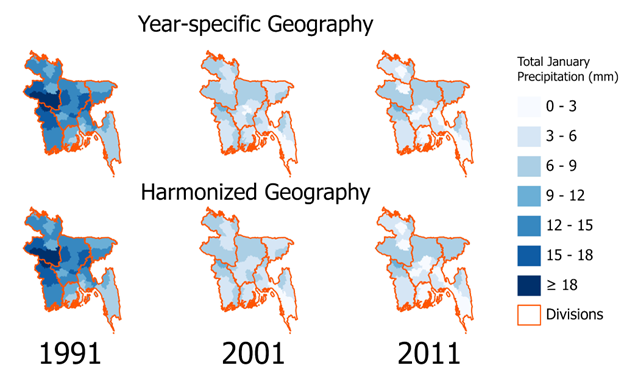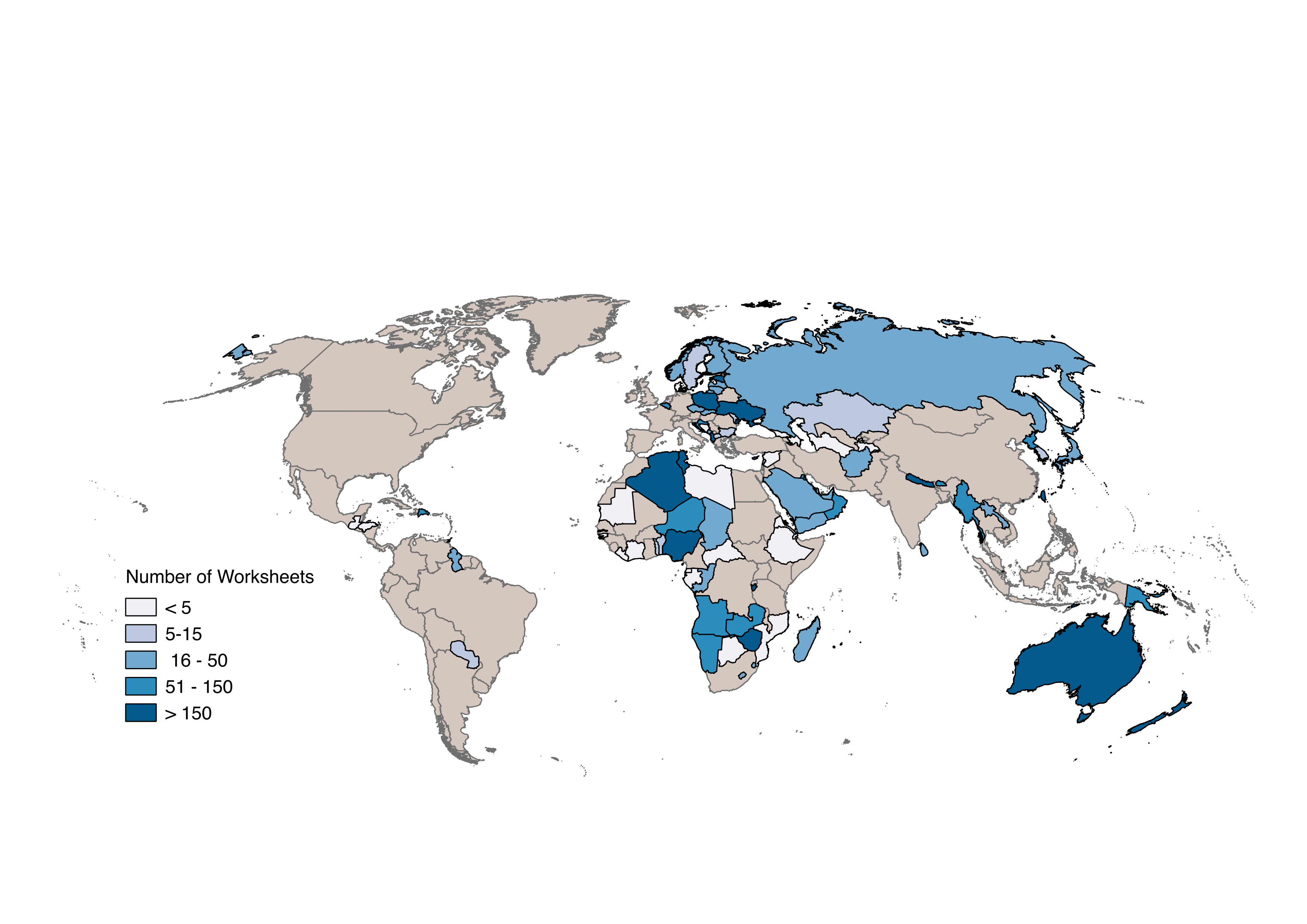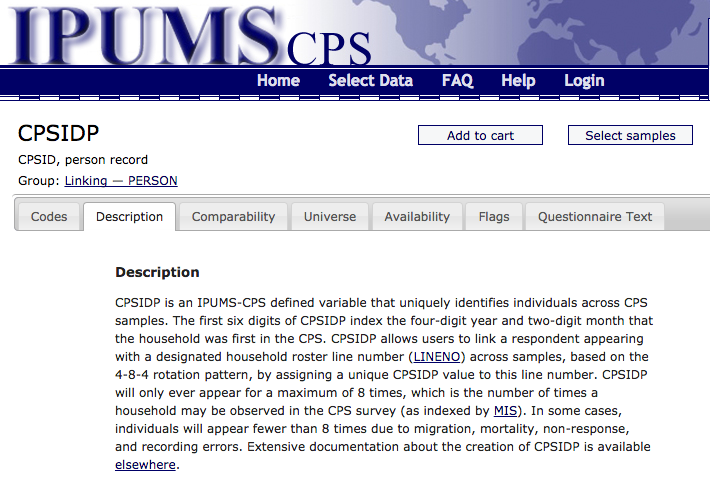By Ryan Gavin & Quinn Heimann
IPUMS International launched a new platform that will aid researchers using geospatial contextual data along with IPUMS International census microdata!
What is geospatial contextual data?
Geospatial contextual data describe features of the physical and social environment of a geographic area, and allow users to explore how contextual factors interrelate with individual characteristics and outcomes. For example, in their 2020 paper in Global Environmental Change, Mueller et al. estimated the effects that climate-related variables had on migration in Botswana, Kenya, and Zambia between 1989 and 2011. Often, however, these data are large, complex, and packaged in unfamiliar ways. With this new platform, IPUMS International simplifies the process of identifying and linking contextual data with our robust repository of census microdata.
Geospatial contextual data can vary across space, time, or both and often do not obey administrative boundaries. IPUMS International is unique in offering spatiotemporally harmonized administrative geography variables, which when linked to time-variant contextual data, allow researchers to explore the relationship between social phenomena and temporally-dynamic geospatial data using a consistent spatial footprint.
For example, researchers might be interested in studying how changing January precipitation in Bangladesh from 1991-2011 is associated with social or demographic variables. In this case, harmonized geographic variables are ideal because of administrative boundary changes in Bangladesh between 2001 and 2011.


 IPUMS-International currently disseminates census microdata from 82 countries around the world. It’s an impressive collection. But it still only covers about half the world’s countries. Under the TerraPop project, we are working to assemble a truly comprehensive global collection of population data.
IPUMS-International currently disseminates census microdata from 82 countries around the world. It’s an impressive collection. But it still only covers about half the world’s countries. Under the TerraPop project, we are working to assemble a truly comprehensive global collection of population data.
